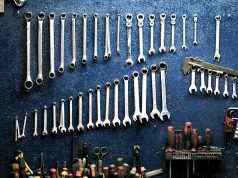
Aerosol machines offer efficient ways to package products ranging from cosmetics to household cleaners. However, while these machines offer numerous benefits, it’s crucial to understand and mitigate the potential dangers associated with their operation to ensure a safe working environment.
Hazards Associated with Aerosol Production
Flammable Materials
One of the primary dangers of aerosol production involves the use of flammable solvents and propellants. These substances can pose a significant risk of explosions or fires if not handled properly. Adequate ventilation is essential to dissipate flammable vapours and reduce the likelihood of ignition.
Pressurised Equipment
Aerosol production machines often operate under high pressure, presenting risks of leaks or ruptures. Regular maintenance is paramount to ensure the integrity of equipment and prevent accidents. Following manufacturer guidelines and conducting routine inspections can help mitigate these risks.
Hazardous Ingredients
Depending on the products being produced, aerosol formulations may contain hazardous ingredients that can pose health risks. Workers should be equipped with appropriate personal protective equipment (PPE), including gloves, respirators, and eye protection, to minimise exposure to potentially harmful substances.
Safeguarding Yourself and Your Workspace
Proper Ventilation Techniques
Implementing effective ventilation systems is crucial to remove flammable vapours and maintain air quality in the workspace. Depending on the scale of production and specific requirements, ventilation methods such as local exhaust ventilation or general dilution ventilation should be employed.
Personal Protective Equipment (PPE)
Workers should wear suitable PPE based on the tasks involved and the chemicals being handled. This includes selecting gloves resistant to the specific chemicals used, respirators with appropriate filtration, and safety goggles to protect against splashes or airborne particles.
Emergency Procedures
It’s essential to have clear emergency procedures in place to address potential accidents swiftly. This includes knowing how to respond to fires, spills, or equipment malfunctions. Providing training on proper emergency protocols and ensuring the availability of fire extinguishers can help minimise the impact of emergencies.
Additional Safety Considerations
Training and Expertise
Proper training on operating aerosol production machines is paramount to ensure safe practices. Employees should receive comprehensive instruction on equipment operation, hazard recognition, and emergency response procedures. Inexperienced workers should work under the supervision of experienced personnel until proficient.
Following Safety Regulations
Adhering to safety regulations set by relevant authorities, such as OSHA standards, is essential to maintain compliance and minimise risks. Accessing and understanding these regulations can help guide safety protocols and ensure legal compliance in the workplace.
Maintaining Your Machine
Regular maintenance of aerosol production machines is critical to prevent malfunctions and accidents. Following the manufacturer’s maintenance schedule, conducting routine inspections, and using authorised service providers can help identify and address potential issues before they escalate.
Prioritising safety when operating aerosol production machines is paramount to protect workers and maintain a secure working environment. By understanding and addressing the potential hazards associated with these machines, employers can minimise risks and ensure the well-being of their workforce. Consulting safety data sheets (SDS) for specific ingredients and adhering to best practices further enhances safety measures and promotes a culture of safety in the workplace.













